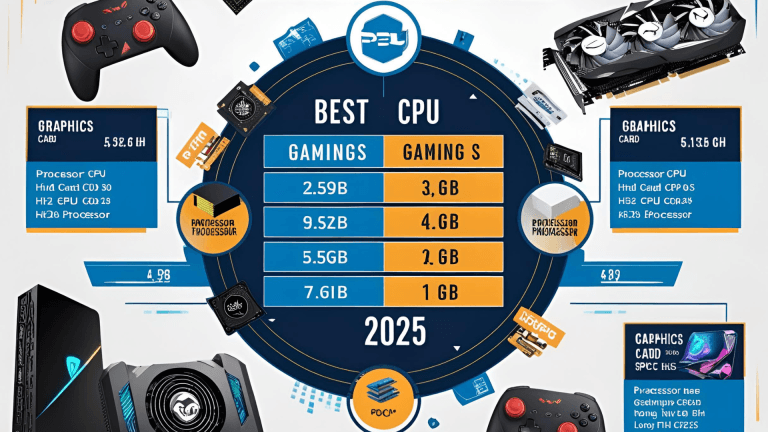Thermal Paste Price Battle: Does Cost Equal Performance?

If you are building or upgrading your PC, you have likely heard that high-end thermal paste can be quite beneficial. Certain brands are far more expensive than others, offering superior heat transfer and cooler temperatures. But in general you’re unlikely to notice more than a few degrees of temperature difference from switching to a more expensive thermal paste, at least if you’re already using something halfway decent.

High end thermal pastes can make a small difference under certain conditions, especially when dealing with overclocking or extreme cooling methods. You’ll probably notice that if you apply your high-quality paste to your jacket, it should last you a long time and also still continue to be effective for plurality years without drying up or breaking down. The mid-range, especially for mundane tasks and regular gaming, has many of the reliable models that do the same (darn) thing than the top-end brands.
How Thermal Paste Works
Thermal paste is an essential element to cooling a CPU or GPU. It fills tiny voids between the processor’s heat spreader and the heatsink and allows heat to flow more readily from the chip to its cooler.
As a processor operation occurs it creates heat, and this heat can destroy your computer if not directed elsewhere. The metal surface of the CPU die and heatsink are not totally flat; tiny air gaps form where two surfaces meet. These gaps, because air is a terrible conductor of heat, slow cooling.
Thermal paste fills in those spaces, providing a nicer path for heat to flow from the hot processor into the colder cooler. This decreases thermal resistance overall and keeps CPU and GPU temps lower, anything that can help with that in a machine like this is going to help keep it cooler and more stable.

Types of Thermal Compounds
The main types of thermal compounds used in computers and their properties are:
- Paste is silicone based: Kiss you CPU lovingly with silicone based paste!
- Metallic paste: Includes small particles of metal such as silver or aluminum. Very thermally conductive but also electrical conductive, so use with caution.
- Ceramic paste: Made from very small ceramic particles. Electrically not conductive and does not conduct heat.
- Carbon-based paste: Made with graphite or carbon particles, offering a good thermal performance without risks of electric shocks.
- Metal paste: That which is usually made of gallium alloys which have very good thermal conductivity but are electrically conductive and can eat through aluminum heat sinks. Recommended for experts only.

Composition and Performance Differences
TIMs need to compromise between their thickness and the thermal conductivity. They must be thick enough to fill cavities in the surfaces but thin enough not to introduce too much thermal resistance.
The vast majority of thermal pastes are some sort of base material (either silicone or synthetic oils) with conductive particles mixed in (metal, ceramic, or carbon). Certain types of paste are non-conductive for the purpose of preventing short circuits
Expensive thermal pastes use advanced materials such as micronized silver and ceramics because these materials resist drying out and maintain their softness for longer. Budget pastes commonly use silicone or zinc oxide which are of lower quality and dry out quicker which degrades performance.
The movement of heat within a material is rated by the paste’s thermal conductivity, measured in watts per meter-kelvin (W/mK). It is an indicator of how well heat moves through the paste. Premium pastes will normally rate between 8 to 12 W/mK while it may be significantly lower in cheaper options.
Viscosity, or thickness, effects ease of application. Premium pastes balance viscosity to ensure consistent coverage, so they do not clump or run creating voids.
Cooling Performance: Expensive vs. Budget Pastes
Tests indicate that the temperature disparity between budget and premium thermal pastes is typically small, oftentimes only 1 to 3 degrees Celsius under load. Very inexpensive or low-grade pastes can increase the CPU or GPU temperatures, increasing the risk of overheating.
Pastes such as Arctic Silver, Gelid GC-Extreme, and Thermal Grizzly Kryonaut yield better thermal margins especially in overclocked or high-stress settings. This enables more consistent system performance along with quieter fan noise.

Liquid Metal Thermal Pastes
Gallium alloy liquid metal thermal pastes boast thermal conductivities above 70 W/mK, greatly surpassing that of traditional pastes. In fact, they can lower temperatures by as much as 8 degrees compared to traditional premium pastes.
That said, liquid metal poses a risk of damaging aluminum heat sinks as it is electrically conductive. The application of liquid metal is complex and requires precision and expertise. Hence, making it unsuitable for novice users.
Real-World Impact on PC Performance
For casuals and gamers, a reputable middle-tier thermal paste should be more than enough. For most purposes, performance demanding tasks like gaming do not benefit from enhanced thermal performance.
While for enthusiasts and over clockers pushing hardware limits, premium pastes grant additional temperatures headroom which improves the stability and longevity of hardware.
Less frequent reapplication and maintenance are required for ultra-grade pastes, making them more effective for longer periods of time.

Application Tips and Best Practices
To maximize thermal paste effectiveness, proper application is extremely important. For optimum results, most manufacturers guide placing a pea-sized dab at the center of the CPU. This lets the heatsink press it to spread.
Before applying new paste, cleaning old paste with isopropyl alcohol is important. Any inefficient application or air entrapment decreases thermal performance.
Make sure to handle it with care because liquid metal and other metal-based pastes are electrically conductive. Spills on motherboard traces or CPU pins can cause problems. Inexperienced users should opt for non-conductive ceramic or silicone-based pastes because they are safer.
Related info: PC Gaming Accessories: A Complete Guide for Improved Gaming Performance in 2025
Longevity and Maintenance
Without drying or cracking, non-damaging premium thermal pastes sustain potency for 3 to 5 years, while budget pastes require reapplication every one to two years.
Liquid metal pastes are lower maintenance, but require more careful handling.

Benefits of Expensive Thermal Pastes
- Reduce CPU/GPU temperatures, especially under heavy load or overclocking, with expensive thermal pastes. They provide unmatched thermal conductivity and decrease the temperature gap.
- Premium pastes resist drying, thus lowering maintenance and extending performance.
- Lessened temperatures reduce risks of thermal throttling and system crashes, providing improved stability.
- Reliable application is made possible with optimized viscosity and consistent ease.
- Modern heatsinks and mounting systems get along well with these pastes, making them highly compatible.
- Formulations used offer minimal risk of electrical conductivity (except for liquid metal), lowering potential damage.
Final Thoughts: Should You Pay a Premium for Thermal Paste?
In general, a reputable brand mid-range thermal paste would suffice for average users as it offers both value and cooling performance. The performance advantages obtained from costly thermal pastes tend to be relatively small, if they exist at all, and are not often noticeable during normal day to day activities.
However, for over clockers, enthusiasts, or customers looking for the best longevity and lowest maintenance, a premium thermal paste might be worthwhile. Liquid metal pastes offer the best performance, but they also demand the highest skill and care.
In essence, the best thermal paste is contingent upon individual preferences, application comfort level, and budget. To achieve the optimal system cooling, maintenance and application of the thermal paste are equally important as the choice of paste itself.









